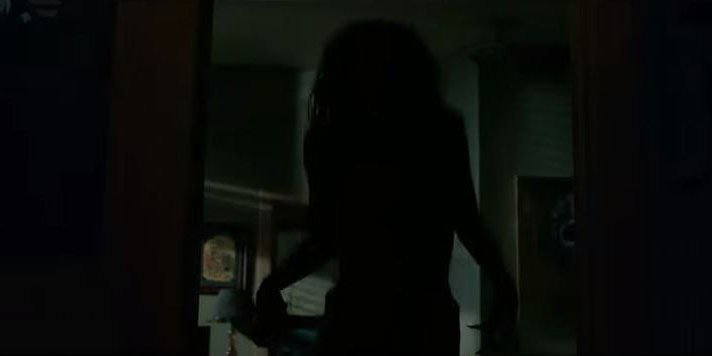Fear For Thought: Lights Out sheds light on life with a mental illness
 CREDIT: WARNER BROS. PICTURES, 2016
CREDIT: WARNER BROS. PICTURES, 2016If you can get past the nightmarish creature in Lights Out, you'll find a strong story about a family coping with mental illness.
The twisted monster of the recently released film Lights Out closely stalks its victims when the lights are on and makes its move once they are switched off. The monster needs the darkness to strike; it is most empowered when its victims are afraid, isolated and when they have their guard down.
The monster is a metaphor for what it’s like to live with an untreated mental illness.
Lights Out, directed by David F. Sandberg, is the big screen adaptation of his original short film of the same title that can still be found on YouTube. Its fleshed out plot applies the short’s concept of a monster, detected only in the shadows, to a brother and sister plagued by their mother’s mental illness. As the children attempt to cope with her latest episode, they find that they must contend with the vicious entity leeching onto their vulnerable mom and terrorizing the family in the darkness.
Lights Out was well received by horror fans and certainly has its scary moments, but its strongest point is its portrayal of how severe psychological disorders often menace family life. In this respect, it proves that horror tropes can be far more effective dramatic devices than the whimsical schlock seen in other films like Silver Linings Playbook, which tend to romanticize mental illnesses over depicting them in a realistic, less Hollywood- sexy way.
The mother’s illness goes unnamed throughout the movie, yet presents itself much in the same fashion as bi-polar disorder in a manic stage. Hopelessly exasperated, it is something the kids have experienced many times over yet are overwhelmed by due to their lack of outside support from extended family or social services. Meanwhile, the monster thrives as the mom stays locked in her darkened house, dangerously lashing out at her children and stops taking her medication. It eventually gains the strength to haunt the entire family, prompting the children to question their own mental well-being – an extremely familiar anxiety for anyone with a mentally ill relative.
Here, the monster is only secondary to the story at hand, wherein a young woman struggles with making herself available to her mother and brother while balancing her own fragile self-preservation. The monster may jump out and roar “boo”, but for me the most tense and best scenes of the film portray the sister’s fear of pulling down carefully built-up walls to express love for a troubled parent in spite of years of resentment and frustration.
Mental illness is a family affair, bottom line. It pushes members away and even tears units completely, irreparably apart. But it can also bring families together, helping them to develop compassion and improve communication. Lights Out is a remarkable horror film in that it conveys both sides of the situation, and ends on a sad yet hopeful note. As a member of a family that has been affected by the fallout of mood-disorders, I highly recommend horror fans give it a watch for initially the scares, but mostly for the catharsis.
















